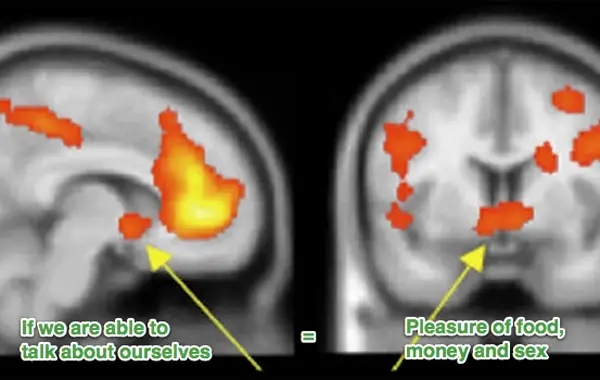The vast majority of marketers are not psychologists, but they do know how to apply psychology studies to attract and engage customers. This is not some kind of special knowledge or secrets of the Mayans – it’s quite obvious things you might have never been thinking about.

I’ve been putting together five psychology studies and wanting to make us better marketers and people, too. Here are 5 psychology studies that would make your photography business marketing smarter and more effective.
The Prism of Personal Beliefs
People tend to browse the information through the prism of their own believes and drive out the things they disagree with. For instance, have you ever see the comments under the blog post saying: “I stopped reading after you said __[something]__, because __[this something]__ is wrong!”. People do stop reading or listening the second they hear something they disagree with. They won’t read a word onward as they’re already convinced they’re right.

And even if people are forced to listen or read, they’re still filter out the information they disagree with. In psychology, this is called confirmation bias which means that people seek out for and remember the information, arguments, and ideas that support their own view. So your reasoning about alternative color schemes or photo retouching could be not heard if a person disagrees with you. Learn about your new clients properly, ask more questions about their tastes and wishes to get to know for sure what will work with them and what won’t.
Reject and Retreat Sales Technique
In the book “Influence” by Robert Cialdini, he describes a reject and retreat technique. The idea behind this technique is the following: You offer a large proposition first, and, when the client says no, you offer (“retreat”) to a second, cheaper offer to which the client is most likely to say yes.
For example, imagine the furniture store. A client comes there to buy a table. A dealer of these tables has a high-end $2,000 table and a starter $129 table. Which should he show a buyer first? Researches showed that if they showed the $129 model first, their average final sale would be $350. If they showed the $2,000 model first, their average final sale would exceeded $1,000.

Robert Cialdini suggests that it happens so because when a person get something, he wants to give something back. In other words, if you rejected some high offer, you would be most likely say yes to the other less offer. So, if you’re selling photography packages, you should start with the high end first. A client has already in mind how much he/she could pay for the package. Starting with high end, move down till you reach their perfect price or, at least, you will give your clients an insight of how much your services cost.
Too Many Choices: Less is More
People don’t really make out good with choices. It could sound a little bit weird, but people tend to be happier with less choice. Let me tell you a story to prove my point.
There was a psychological experiment carried out in Harvard, where a group of students were taught how to take high-quality black and white photos, given access to the best photography equipment, and shown how to use a dark room to process photos. After the students took a lot of photos, they were asked to choose just two shots and print them. And at the end of the exercise, each student was told that they had to give up one of their photographs, but they could keep the other one.
Half of the group were told that they could change the picture to the second one if they changed their mind, and the other part of the group were told that the decision is final and they could not change the picture even if they change their mind.

The result showed that the part of the students that had less choice were happier with their snapshots than the other part. The other part that had more choice were disappointed and yearning about the photos days after the experiment.
Knowing that less choice is better, you can use it for your marketing. If you have too many products or services, for instance, photography pack, prints, photo albums, try to group them and deliver in smaller chunks that will help to focus on a particular product group instead of getting lost in a variety of choices.
Serial Position Effect
Even if this term sounds too complicated and you have never heard it before, I’m pretty sure you have experienced it. Serial position effect explains how people remember some sequential things. If you read a list of just ten words, you will easily remember the first and the last word, while the items in the middle get a bit foggy. Your brain stores the first thing in your long term memory and the last thing in your short term memory.
Knowing this technique, you may use it in your photography marketing. For example, while choosing the pace for an advertising, writing a list of prices, or offering cross-sell solutions for clients. Just keep in mind that you should properly select the order of your best offers and assets.
Talking About Yourself
In photography, you should talk or/and write about yourself a lot of times. And sometimes it’s quite hard to write a proper bio for your about me page. But clients come to you not to hear you talk about yourself; they come to hear you talk about them!
They read the information about you not like “Look how cool I am”, but “Look how cool we could work together”! Feel that difference. Your bio and about me page are just one more chance to say “Hey! I’m here to solve your problems!”
People love to talk about themselves. Harvard neuroscientists have discovered that we can’t help but share our thoughts – in fact, it triggers the same sensation of pleasure in our brains as money and food do.

The studies also showed that people are willing to give money to talk about themselves. So, telling about yourself remember that you should show your potential customers that “I have to tell them a bit about myself, so they feel comfortable letting me help them”. Listen more and talk less about yourself.
Secret Knowledge
Knowing the characteristics of human mind you could influence on their behavior and make them do what you want thinking that’s exactly what they want. So, you don’t need a degree in psychology to influence customers’ behaviour. Put your time and effort to apply the tips above correctly and almost for sure you’ll get great results.









Hi Nancy, would you mind forwarding me the Havard study link on people and choice?
Hi Jana! Sure, here it is: http://www.pnas.org/content/109/21/8038.full
Your website has a nice structure and colorful imagery, with potentially useful information. However, you’ve lost credibility due to the many grammatical errors throughout. You should have a knowledgeable person proofread your site before posting.